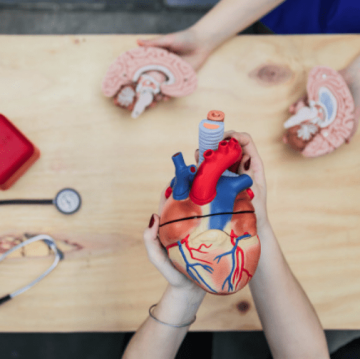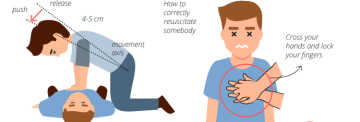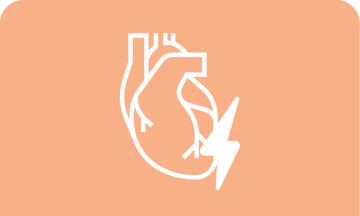Healthy heart, vessels and brain
“Your Heart for Life” campaign teaches people how to take care of their heart. Only a few people know, how to prevent cardiovascular diseases, how to recognize a heart attack or stroke, or what to do in such situations.

How to do chest compressions?
- Put your phone on the speaker
- Kneel next to the patient
- Place your hands over the center of their chest (between the nipples)
- Interlace your fingers
- Make sure your elbows are straight
- Using your upper body weight, push straight down on the chest at least 5 cm deep (it's the size of a Tic Tac box)
- Keep the pace of 100 compressions per minute (to the rhythm of Jingle Bells or Stayin Alive from Bee Gees)

How to prevent a heart attack and stroke?
Preventable risk factors:
- Smoking - If you quit smoking, the risk of having a heart attack or stroke lowers by up to 50%.
- Lack of exercise - Exercise regularly, at least 5 times a week for 30 minutes.
- Sleep - Sleep for at least 7 hours a day and go to bed (and from it) at the same time every day (yes, even at weekends :) )
- Diabetes - If you have diabetes, get checked by your doctor regularly
- Blood pressure - If you have high blood pressure, check it regularly and take your pills
Non-preventable risk factors:
- Gender - Men are more prone to both heart attack and stroke, women are more protected thanks to their sex hormones - estrogens.
- Age - The risk of having a stroke or a heart attack is higher after you turn 55.
- Genetics - If someone from your family had a stroke before the age of 55, tell that to your GP. Familial hypercholesterolemia, for example, is a hereditary disease, which can manifest at a young age.
What to do when...
5 important steps to do when you have or see someone else having a heart attack or stroke.


